At first glance, Red7, with its deck of numbered cards, looks like yet another Uno reimagining. However, any gamer who recognizes co-designer Carl Chudyk’s name (Glory to Rome, Innovation) will immediately know Red7 is anything but simple. Read our Red7 review to learn more about its colorful gameplay.
Contents
Red7 Gameplay Overview
The goal of Red7 is easy: to ensure you are winning by the end of your turn according to the current rule. At the start of the game, this is “highest card wins,” which means that you need to have the highest card in your Palette (your personal tableau).
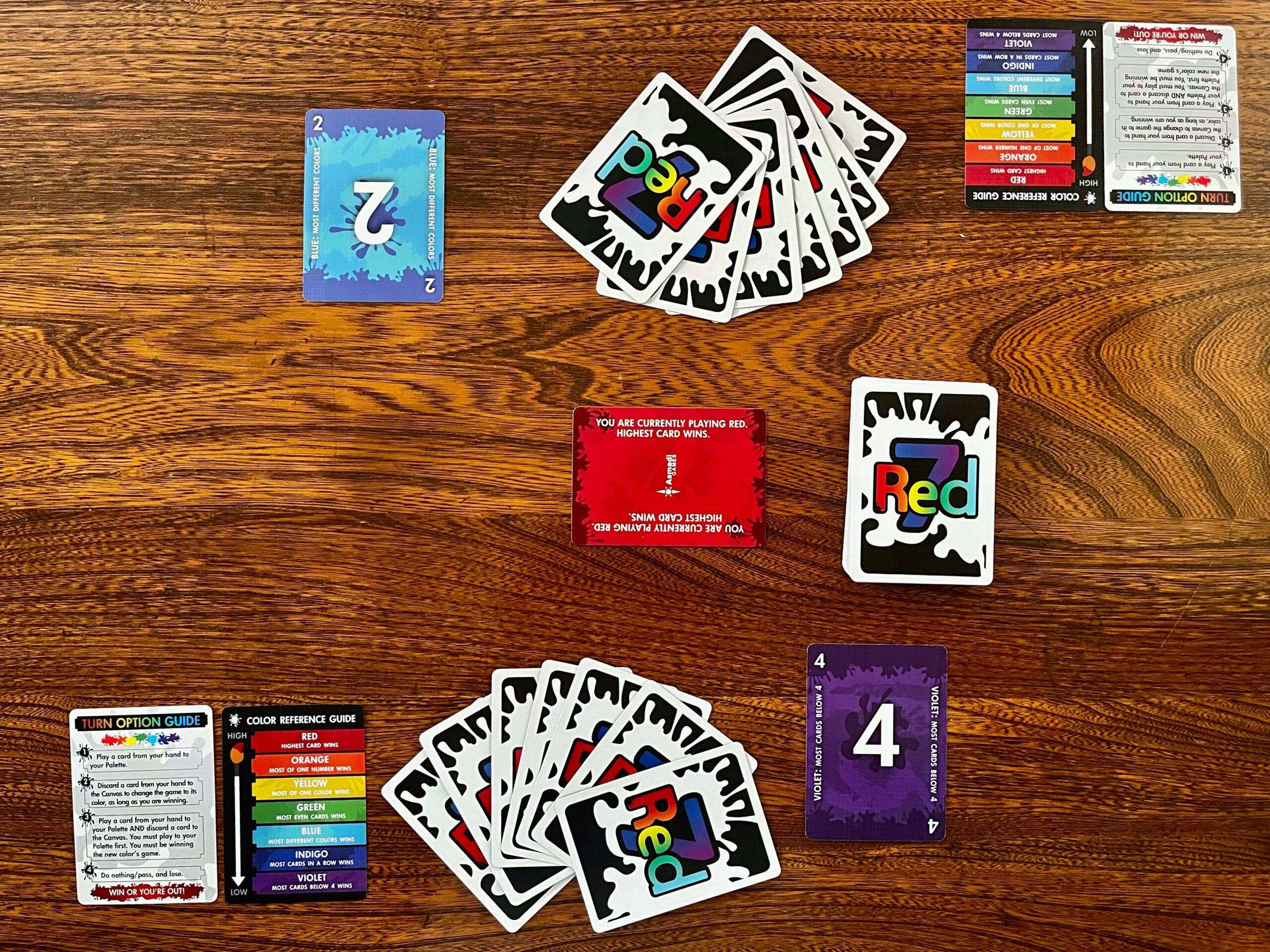
A game of Red7 set up and ready to play with the starting rule card “Highest Card wins” in the center of the play area.
During the game, however, players will be able to add cards to the Canvas (the rule pile) to alter the winning conditions. At the end of your turn, if you are not winning according to the current rule, you lose and are eliminated from play.
Anatomy of a Red7 Card
Every card in Red7 has 3 key features: a number, a color, and a rule associated with the color.
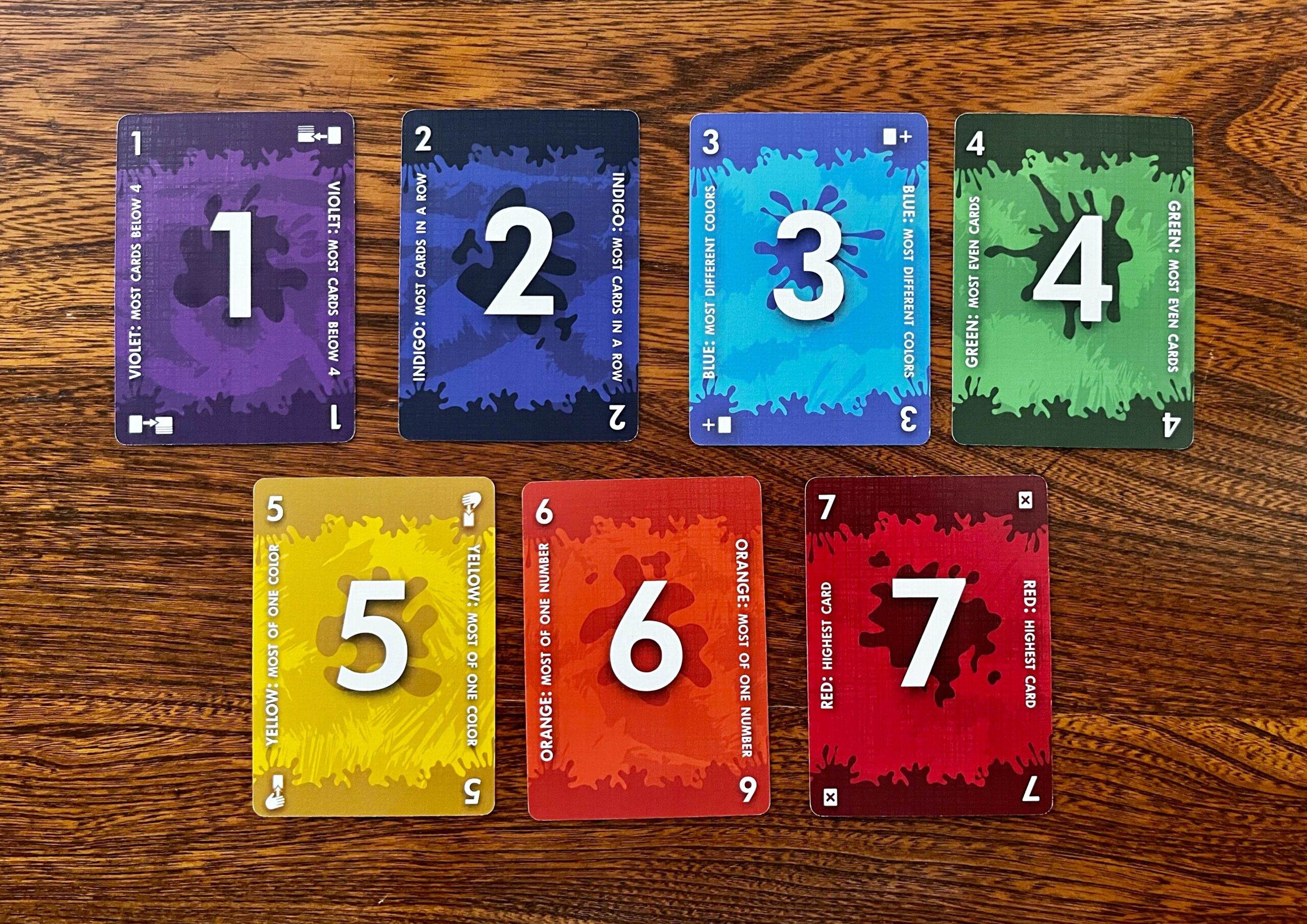
The seven different card colors in Red7. Each color has cards numbered 1-7.
The value of a card can be used to determine who is currently winning, so, for example, a player with a 6 will beat a player with a 4. However, things get a little more complicated when multiple players have the same highest-value card. This is where the color of the cards is used to help determine the winner.
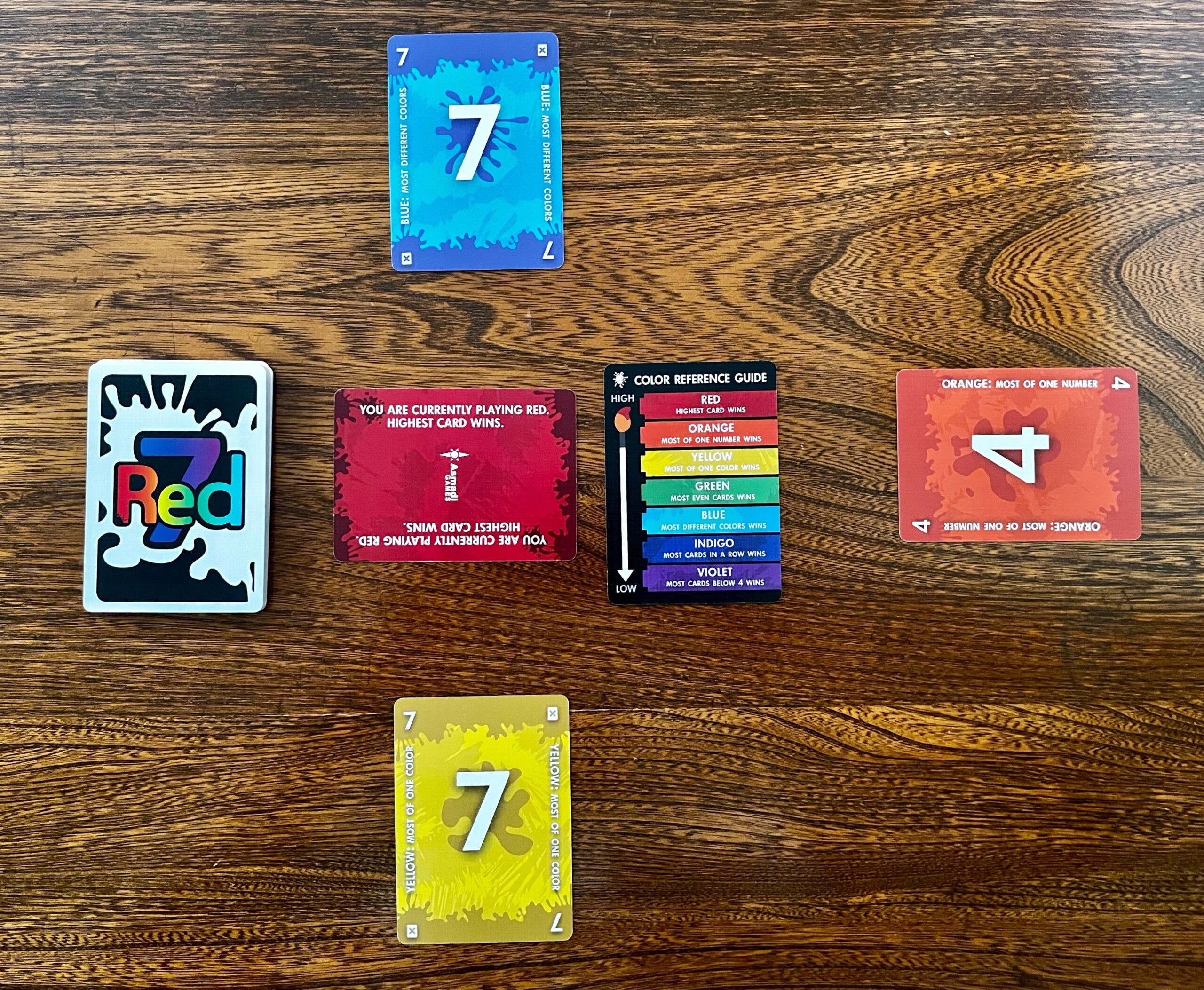
Two players have the highest card number (blue 7 and yellow 7). However, the player with the yellow 7 is currently winning since yellow is valued higher than blue on the color spectrum.
The third important feature, the rule, is how players can manipulate the current game state in such a way that they ensure they’re winning at the end of their turn.
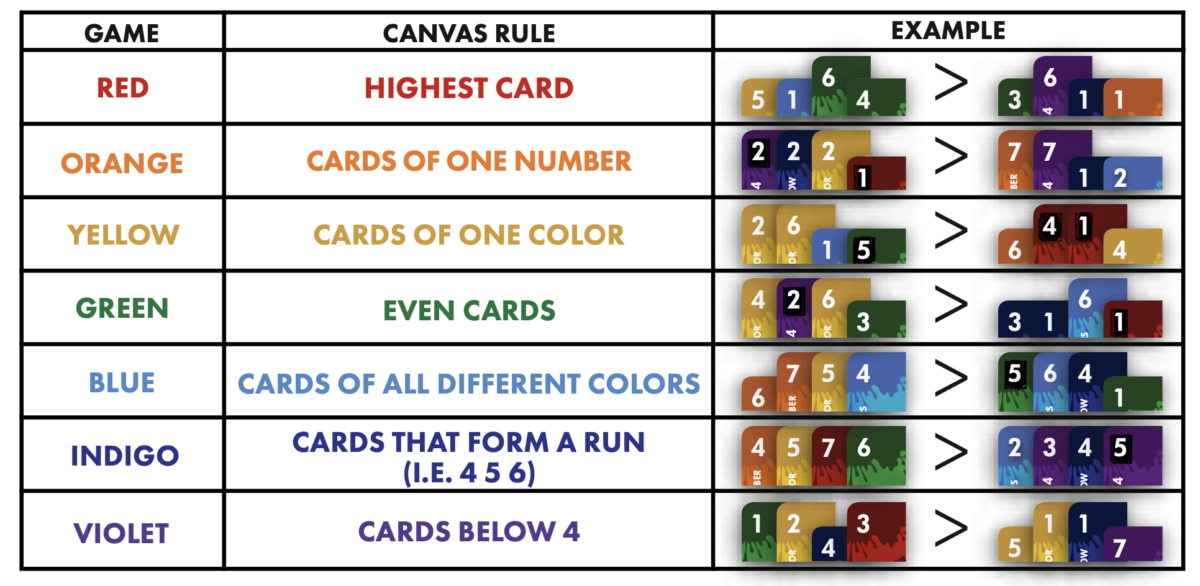
A table from the rulebook indicating each card color rule with an example.
Playing Red7
Red7 is a game for two to four players. Each player is dealt a starting hand of seven cards, as well as one faceup card to begin their Palette.
The player who goes first is the person to the left of the current winning player — the player who best meets the starting rule “highest card wins.”
A Turn in Red7
On your turn, you may do one of the following actions:
- Add to your Palette by playing one card faceup to it.
- Change the current rule by discarding one card to the Canvas. (You must be winning according to the new rule you played.)
- Add to your Palette by playing one card faceup to it and then change the current rule by discarding one card to the Canvas. (You must also be winning according to the new rule to do this action.)
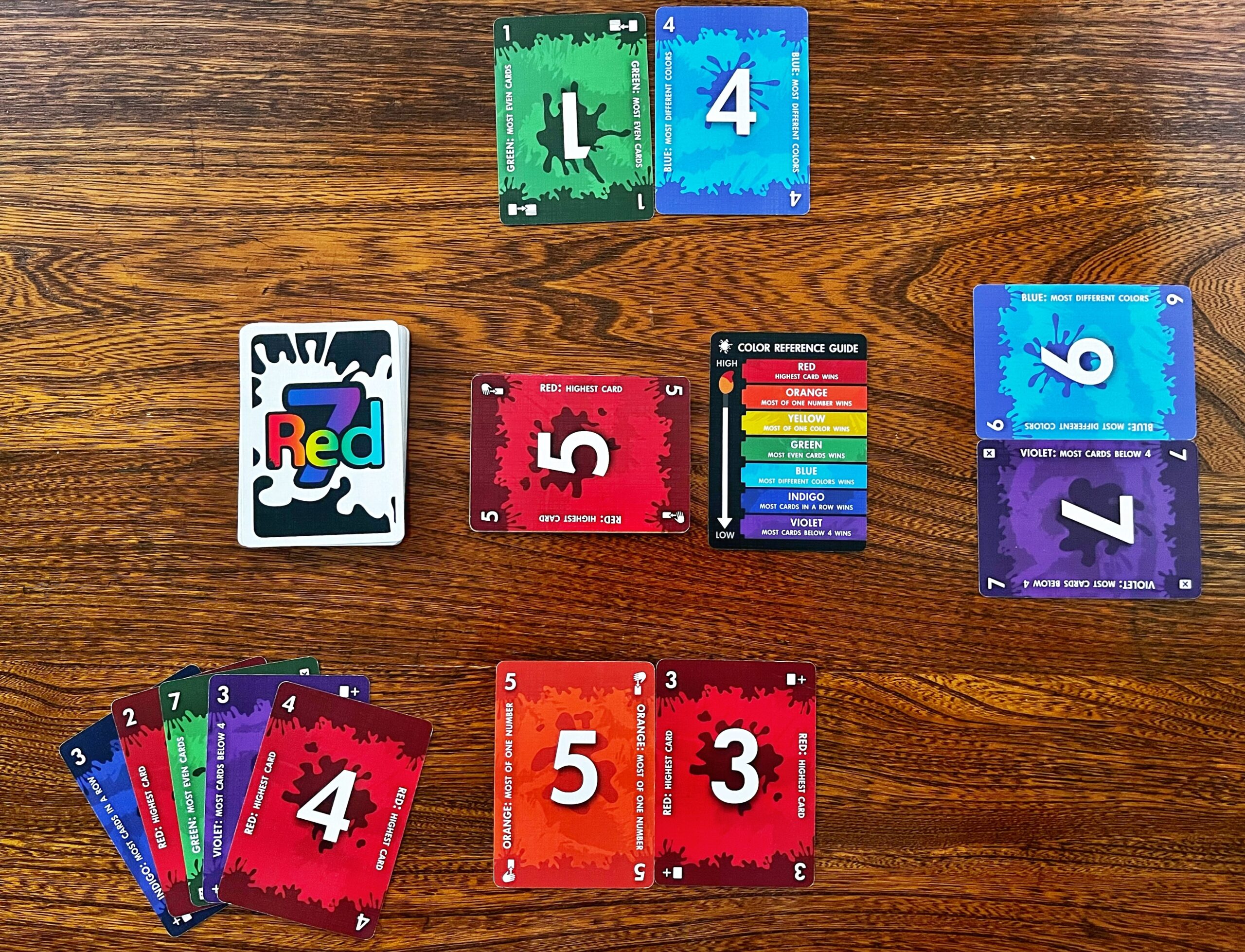
On their turn, the bottom player could add the green 7 to their Palette OR discard their violet 3 to the Canvas so that they are winning.
Additionally, there is a fourth “action” you could take on your turn: do nothing and lose. In a standard game of Red7, you would only take this action if you had no cards in your hand.
In the advanced variant of the game, which I’ll briefly detail later, this action is sometimes intentionally chosen for strategic reasons.
Am I Winning Red7?
After you’ve chosen one of the actions noted above, you will either be winning or losing. You are winning if your Palette has more cards that meet the current Canvas rule than the other players.
Your other cards in your Palette that don’t meet the Canvas rule are temporarily ignored (but not discarded). In the case of a tie, the tied player with the highest value card meeting the Canvas rule wins, using the Color Reference Guide for tiebreakers if necessary.
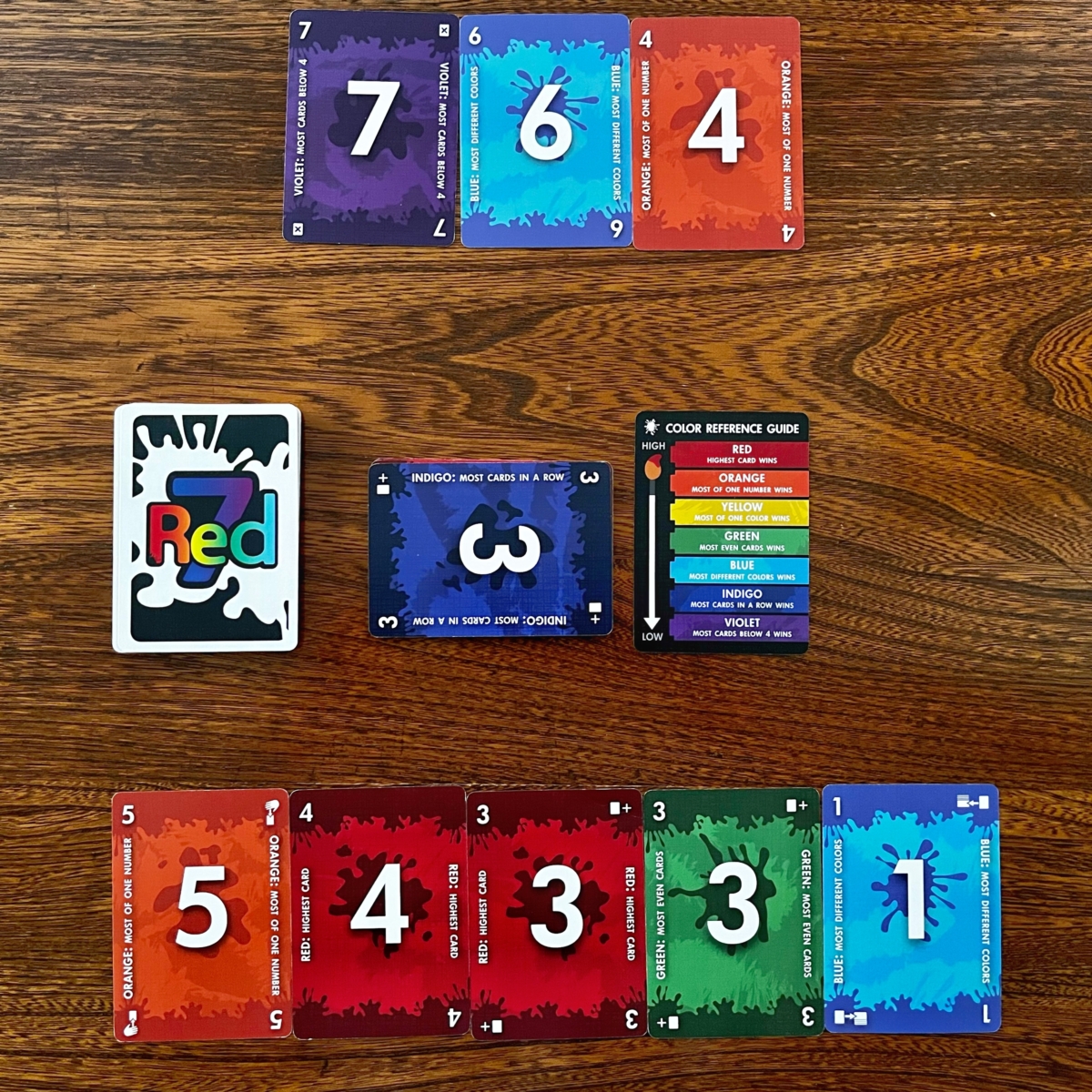
Even though the top player has the highest card number, the bottom player is currently winning since they best meet the Canvas rule, most cards in a row. They have three cards (5, 4, 3) compared to the top player’s two (7, 6).
You lose and are eliminated from the game if you are not winning by the end of your turn (as determined above) or if you have no cards in your hand at the start of the turn.
If at the start of your turn, you are the only player left in the game, you’ve won!
Red7 Advanced Variant
Once you are familiar with the basic rules of Red7, there is an advanced variant of play that introduces new rules, card powers, and scoring between rounds.
Each of the odd-numbered cards (1, 3, 5, and 7) have icons in their corners that represent the action you must take, if possible, whenever you play it to your Palette.
These bonus actions allow you to discard cards, play additional cards, draw new cards, and even steal from another player’s Palette.
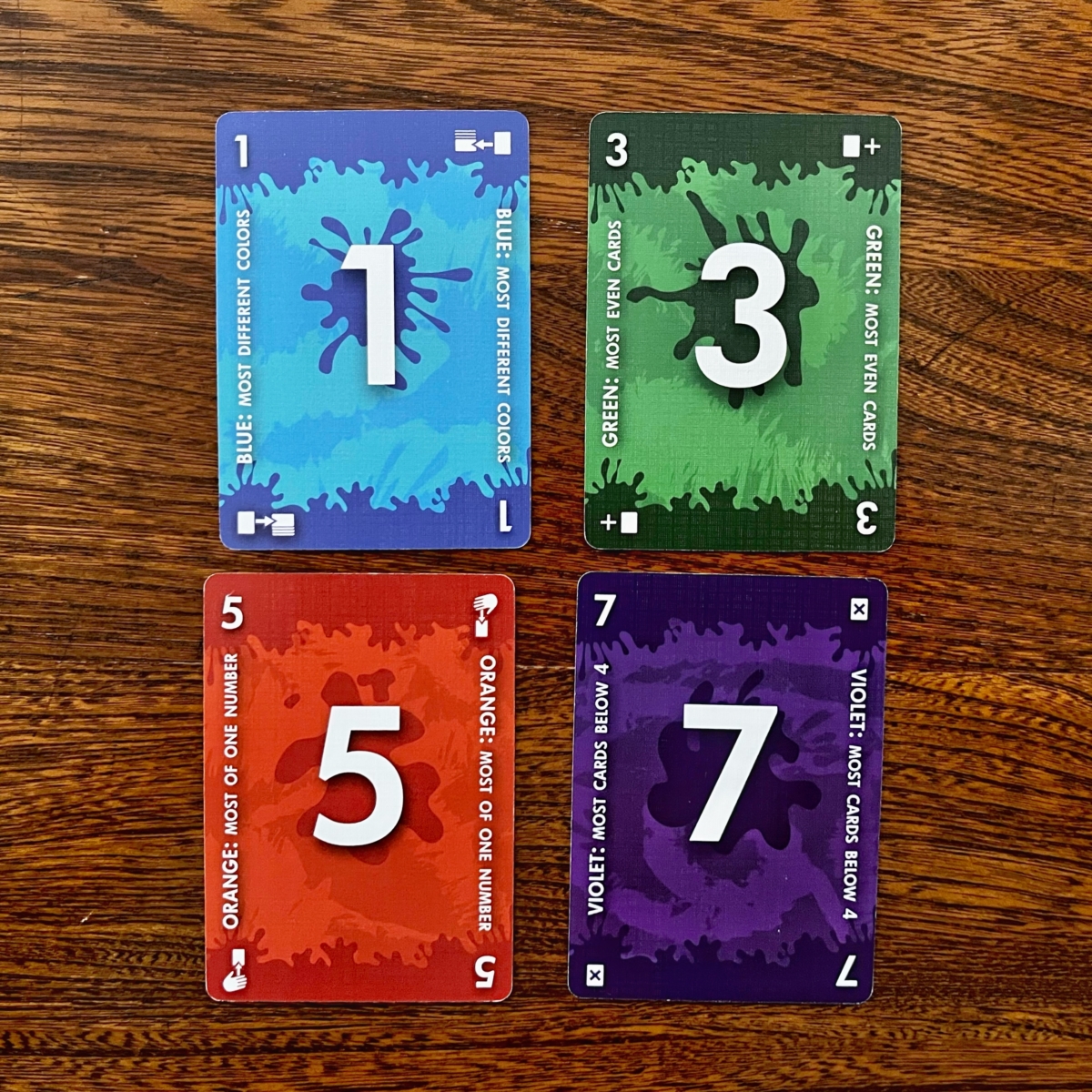
The icons in the corners of the odd-numbered cards represent powerful, rule-breaking actions in the advanced variant of Red7.
Moreover, in the advanced variant, when there is only one player left in the game, this marks the end of a round. The player who won the round takes all the cards in their Palette that meet the current Canvas rule and adds them to their score pile under their Color Reference card.
Each card there is worth its face value in points — and the game ends when a player has reached a certain number of points depending on the player count.
Red7 Review
Red7 is a deceptively simple-looking game; people see the rainbow-colored cards with numbers and think it will be a quick and easy gameplay experience.
While it may be true that games of Red7 are quick — the longest game I’ve played was 20 minutes using the advanced variant — they are certainly not easy.
The most compelling part of Red7 is the tension of every turn. Trying to decide what to play and where so that you are not only winning but also ensuring you survive your next turn can be agonizing in the best way.
There is also the stress you feel on other players’ turns as you hope they don’t completely mess up your well-formulated plans — and they will.
Cause for Concern?
While it is a lovely, quick game, Red7 does have quite the learning curve for new players. Not only do they have to wrap their head around how important the hand management is, but they also need to internalize exactly how the winner of a turn is determined.
Often, it will take new players a few turns before they grasp the basic play structure.
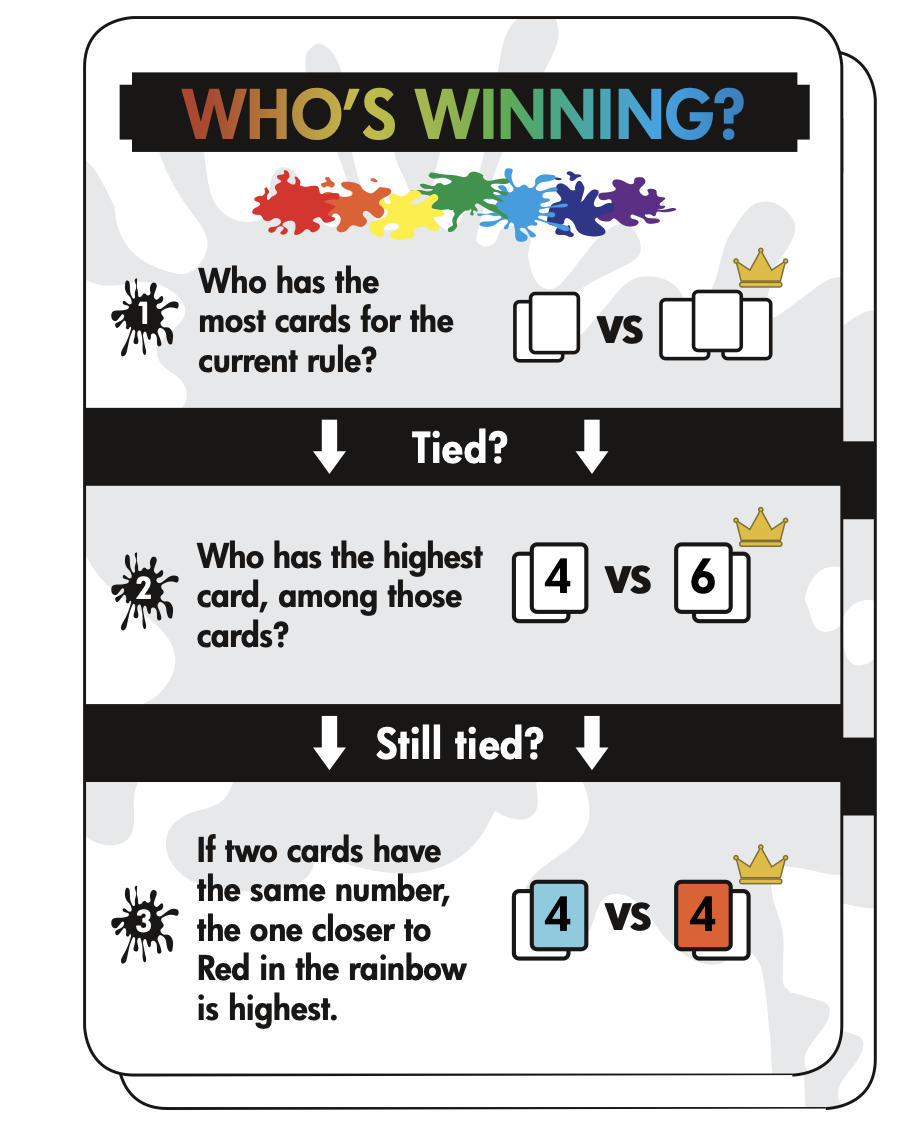
Thankfully, the new editions of Red7 come with this player aid to help understand how to determine who’s winning.
There are some gamers who may be concerned that Red7 is too lucky, especially since your starting hand and Palette cards are dealt randomly.
I would argue this game is quite strategic, and there are ways to manage that initial luck (particularly if you play with the advanced variant rules).
Furthermore, the player elimination aspect of the game is nothing to worry about either. Games play so quickly that you won’t be sitting around waiting for the other players to finish. (You’ll probably even find yourself invested in each of their turns.)
Finally, any gamers who have difficulty differentiating colors should rest easy: each card has its color written on it.
Final Thoughts
Red7 is a fantastic, quick-playing, and thinky gameplay experience. Unfortunately, it has been out of print for a few years, but luckily it’s available to play for free on Board Game Arena and Yucata if you’re interested in checking it out.
You might also be interested in the following:

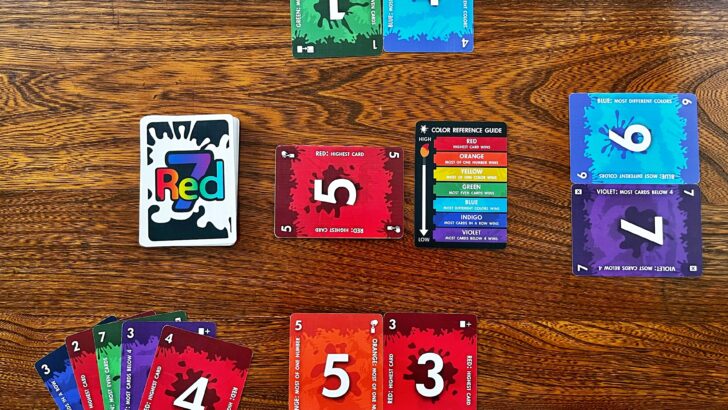
Point Salad Review — You Don’t Make Friends With Salad
Monday 4th of December 2023
[…] Red7 Review […]
Uno Review - Skip, Skip, Pick Up Two
Monday 4th of December 2023
[…] Red7 Review […]